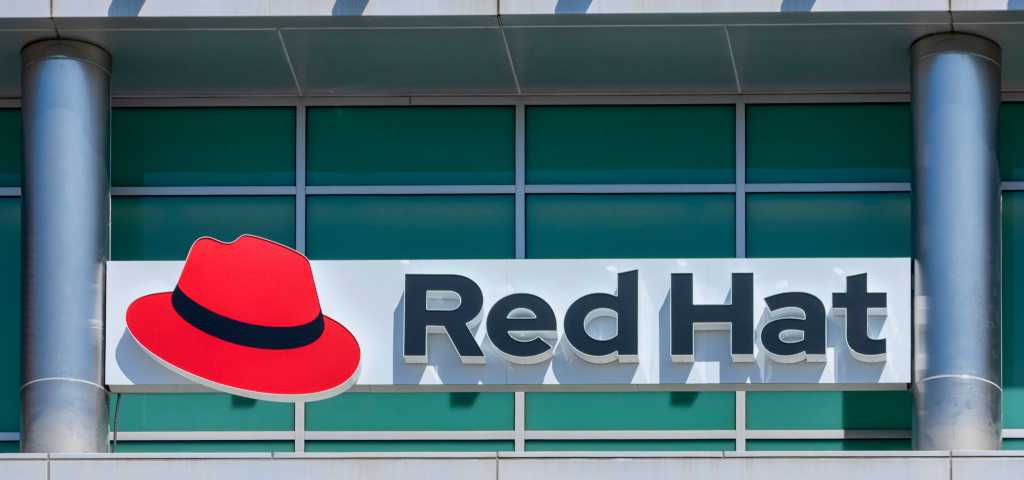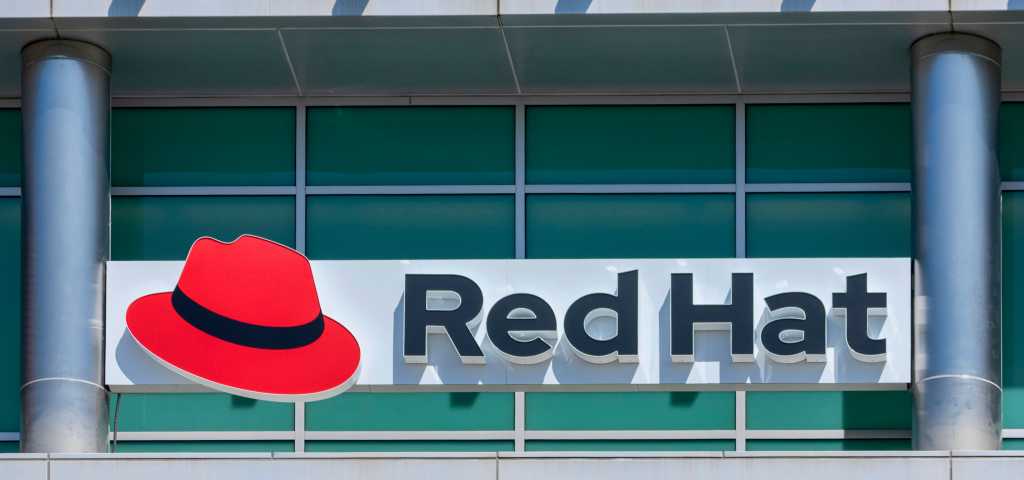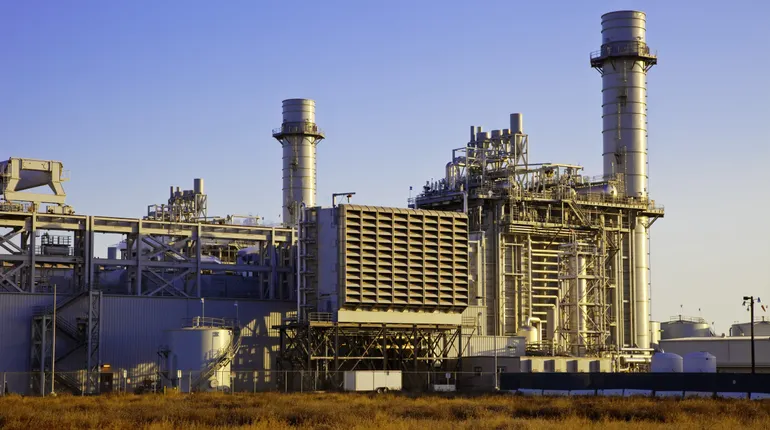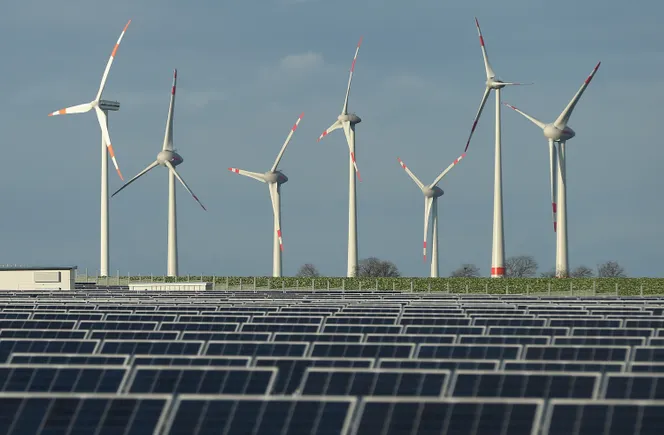
The thousands of sprawling acres in rural northeast Louisiana had gone unwanted for nearly two decades. Louisiana authorities bought the land in Richland Parish in 2006 to promote economic development in one of the poorest regions in the state. For years, they marketed the former agricultural fields as the Franklin Farm mega site, first to auto manufacturers (no takers) and after that to other industries that might want to occupy more than a thousand acres just off the interstate.
So it’s no wonder that state and local politicians were exuberant when Meta showed up. In December, the company announced plans to build a massive $10 billion data center for training its artificial-intelligence models at the site, with operations to begin in 2028. “A game changer,” declared Governor Jeff Landry, citing 5,000 construction jobs and 500 jobs at the data center that are expected to be created and calling it the largest private capital investment in the state’s history. From a rural backwater to the heart of the booming AI revolution!
The AI data center also promises to transform the state’s energy future. Stretching in length for more than a mile, it will be Meta’s largest in the world, and it will have an enormous appetite for electricity, requiring two gigawatts for computation alone (the electricity for cooling and other building needs will add to that). When it’s up and running, it will be the equivalent of suddenly adding a decent-size city to the region’s grid—one that never sleeps and needs a steady, uninterrupted flow of electricity.
To power the data center, Entergy aims to spend $3.2 billion to build three large natural-gas power plants with a total capacity of 2.3 gigawatts and upgrade the grid to accommodate the huge jump in anticipated demand. In its filing to the state’s power regulatory agency, Entergy acknowledged that natural-gas plants “emit significant amounts of CO2” but said the energy source was the only affordable choice given the need to quickly meet the 24-7 electricity demand from the huge data center.
Meta said it will work with Entergy to eventually bring online at least 1.5 gigawatts of new renewables, including solar, but that it had not yet decided which specific projects to fund or when those investments will be made. Meanwhile, the new natural-gas plants, which are scheduled to be up and running starting in 2028 and will have a typical lifetime of around 30 years, will further lock in the state’s commitment to the fossil fuel.
The development has sparked interest from the US Congress; last week, Sheldon Whitehouse, the ranking member of the Senate Committee on Environment and Public Works issued a letter to Meta that called out the company’s plan to power its data center with “new and unabated natural gas generation” and said its promises to offset the resulting emissions “by funding carbon capture and a solar project are vague and offer little reassurance.”
The choice of natural gas as the go-to solution to meet the growing demand for power from AI is not unique to Louisiana. The fossil fuel is already the country’s chief source of electricity generation, and large natural-gas plants are being built around the country to feed electricity to new and planned AI data centers. While some climate advocates have hoped that cleaner renewable power would soon overtake it, the booming power demand from data centers is all but wiping out any prospect that the US will wean itself off natural gas anytime soon.
The reality on the ground is that natural gas is “the default” to meet the exploding power demand from AI data centers, says David Victor, a political scientist at the University of California, San Diego, and co-director of its Deep Decarbonization Project. “The natural-gas plant is the thing that you know how to build, you know what it’s going to cost (more or less), and you know how to scale it and get it approved,” says Victor. “Even for [AI] companies that want to have low emissions profiles and who are big pushers of low or zero carbon, they won’t have a choice but to use gas.”
The preference for natural gas is particularly pronounced in the American South, where plans for multiple large gas-fired plants are in the works in states such as Virginia, North Carolina, South Carolina, and Georgia. Utilities in those states alone are planning some 20 gigawatts of new natural-gas power plants over the next 15 years, according to a recent report. And much of the new demand—particularly in Virginia, South Carolina and Georgia—is coming from data centers; in those 3 states data centers account for around 65 to 85% of projected load growth.
“It’s a long-term commitment in absolutely the wrong direction,” says Greg Buppert, a senior attorney at the Southern Environmental Law Center in Charlottesville, Virginia. If all the proposed gas plants get built in the South over the next 15 years, he says, “we’ll just have to accept that we won’t meet emissions reduction goals.”
But even as it looks more and more likely that natural gas will remain a sizable part of our energy future, questions abound over just what its continued dominance will look like.
For one thing, no one is sure exactly how much electricity AI data centers will need in the future and how large an appetite companies will have for natural gas. Demand for AI could fizzle. Or AI companies could make a concerted effort to shift to renewable energy or nuclear power. Such possibilities mean that the US could be on a path to overbuild natural-gas capacity, which would leave regions saddled with unneeded and polluting fossil-fuel dinosaurs—and residents footing soaring electricity bills to pay off today’s investments.
The good news is that such risks could likely be managed over the next few years, if—and it’s a big if—AI companies are more transparent about how flexible they can be in their seemingly insatiable energy demands.
The reign of natural gas
Natural gas in the US is cheap and abundant these days. Two decades ago, huge reserves were found in shale deposits scattered across the country. In 2008, as fracking started to make it possible to extract large quantities of the gas from shale, natural gas was selling for $13 per million Btu (a measure of thermal energy); last year, it averaged just $2.21, the lowest annual price (adjusting for inflation) ever reported, according to the US Energy Information Administration (EIA).
Around 2016, natural gas overtook coal as the main fuel for electricity generation in the US. And today—despite the rapid rise of solar and wind power, and well-deserved enthusiasm for the falling price of such renewables—natural gas is still king, accounting for around 40% of electricity generated in the US. In Louisiana, which is also a big producer, that share is some 72%, according to a recent audit.
Natural gas burns much cleaner than coal, producing roughly half as much carbon dioxide. In the early days of the gas revolution, many environmental activists and progressive politicians touted it as a valuable “bridge” to renewables and other sources of clean energy. And by some calculations, natural gas has fulfilled that promise. The power sector has been one of the few success stories in lowering US emissions, thanks to its use of natural gas as a replacement for coal.
But natural gas still produces a lot of carbon dioxide when it is burned in conventionally equipped power plants. And fracking causes local air and water pollution. Perhaps most worrisome, drilling and pipelines are releasing substantial amounts of methane, the main ingredient in natural gas, both accidentally and by intentional venting. Methane is a far more potent greenhouse gas than carbon dioxide, and the emissions are a growing concern to climate scientists, albeit one that’s difficult to quantify.
Still, carbon emissions from the power sector will likely continue to drop as coal is further squeezed out and more renewables get built, according to the Rhodium Group, a research consultancy. But Rhodium also projects that if electricity demand from data centers remains high and natural-gas prices low, the fossil fuel will remain the dominant source of power generation at least through 2035 and the transition to cleaner electricity will be much delayed. Rhodium estimates that the continued reign of natural gas will lead to an additional 278 million metric tons of annual US carbon emissions by 2035 (roughly equivalent to the emissions from a large US state such as Florida), relative to a future in which the use of fossil fuel gradually winds down.
Our addiction to natural gas, however, doesn’t have to be a total climate disaster, at least over the longer term. Large AI companies could use their vast leverage to insist that utilities install carbon capture and sequestration (CCS) at power plants and use natural gas sourced with limited methane emissions.
Entergy, for one, says its new gas turbines will be able to incorporate CCS through future upgrades. And Meta says it will help to fund the installation of CCS equipment at one of Entergy’s existing natural-gas power plants in southern Louisiana to help prove out the technology.
But the transition to clean natural gas is a hope that will take decades to realize. Meanwhile, utilities across the country are facing a more imminent and practical challenge: how to meet the sudden demand for gigawatts more power in the next few years without inadvertently building far too much capacity. For many, adding more natural-gas power plants might seem like the safe bet. But what if the explosion in AI demand doesn’t show up?
Times of stress
AI companies tout the need for massive, power-hungry data centers. But estimates for just how much energy it will actually take to train and run AI models vary wildly. And the technology keeps changing, sometimes seemingly overnight. DeepSeek, the new Chinese model that debuted in January, may or may not signal a future of new energy-efficient AI, but it certainly raises the possibility that such advances are possible. Maybe we will find ways to use far more energy-efficient hardware. Or maybe the AI revolution will peter out and many of the massive data centers that companies think they’ll need will never get built. There are already signs that too many have been constructed in China and clues that it might be beginning to happen in the US.
Despite the uncertainty, power providers have the task of drawing up long-term plans for investments to accommodate projected demand. Too little capacity and their customers face blackouts; too much and those customers face outsize electricity bills to fund investments in unneeded power.
There could be a way to lessen the risk of overbuilding natural-gas power, however. Plenty of power is available on average around the country and on most regional grids. Most utilities typically use only about 53% of their available capacity on average during the year, according to a Duke study. The problem is that utilities must be prepared for the few hours when demand spikes—say, because of severe winter weather or a summer heat wave.
The soaring demand from AI data centers is prompting many power providers to plan new capacity to make sure they have plenty of what Tyler Norris, a fellow at Duke’s Nicholas School of the Environment, and his colleagues call “headroom,” to meet any spikes in demand. But after analyzing data from power systems across the country, Norris and his coauthors found that if large AI facilities cut back their electricity use during hours of peak demand, many regional power grids could accommodate those AI customers without adding new generation capacity.
Even a moderate level of flexibility would make a huge difference. The Duke researchers estimate that if data centers cut their electricity use by roughly half for just a few hours during the year, it will allow utilities to handle some additional 76 gigawatts of new demand. That means power providers could effectively absorb the 65 or so additional gigawatts that, according to some predictions, data centers will likely need by 2029.
“The prevailing assumption is that data centers are 100% inflexible,” says Norris. That is, that they need to run at full power all the time. But Norris says AI data centers, particularly ones that are training large foundation models (such as Meta’s facility in Richland Parish), can avoid running at full capacity or shift their computation loads to other data centers around the country—or even ramp up their own backup power—during times when a grid is under stress.
The increased flexibility could allow companies to get AI data centers up and running faster, without waiting for new power plants and upgrades to transmission lines—which can take years to get approved and built. It could also, Norris noted in testimony to the US Congress in early March, provide at least a short-term reprieve on the rush to build more natural-gas power, buying time for utilities to develop and plan for cleaner technologies such as advanced nuclear and enhanced geothermal. It could, he testified, prevent “a hasty overbuild of natural-gas infrastructure.”
AI companies have expressed some interest in their ability to shift around demand for power. But there are still plenty of technology questions around how to make it happen. Late last year, EPRI (the Electric Power Research Institute), a nonprofit R&D group, started a three-year collaboration with power providers, grid operators, and AI companies including Meta and Google, to figure it out. “The potential is very large,” says David Porter, the EPRI vice president who runs the project, but we must show it works “beyond just something on a piece of paper or a computer screen.”
Porter estimates that there are typically 80 to 90 hours a year when a local grid is under stress and it would help for a data center to reduce its energy use. But, he says, AI data centers still need to figure out how to throttle back at those times, and grid operators need to learn how to suddenly subtract and then add back hundreds of megawatts of electricity without disrupting their systems. “There’s still a lot of work to be done so that it’s seamless for the continuous operation of the data centers and seamless for the continuous operation of the grid,” he says.
Footing the bill
Ultimately, getting AI data centers to be more flexible in their power demands will require more than a technological fix. It will require a shift in how AI companies work with utilities and local communities, providing them with more information and insights into actual electricity needs. And it will take aggressive regulators to make sure utilities are rigorously evaluating the power requirements of data centers rather than just reflexively building more natural-gas plants.
“The most important climate policymakers in the country right now are not in Washington. They’re in state capitals, and these are public utility commissioners,” says Costa Samaras, the director of Carnegie Mellon University’s Scott Institute for Energy Innovation.
In Louisiana, those policymakers are the elected officials at the Louisiana Public Service Commission, who are expected to rule later this year on Entergy’s proposed new gas plants and grid upgrades. The LPSC commissioners will decide whether Entergy’s arguments about the huge energy requirements of Meta’s data center and need for full 24/7 power leave no alternative to natural gas.
In the application it filed last fall with LPSC, Entergy said natural-gas power was essential for it to meet demand “throughout the day and night.” Teaming up solar power with battery storage could work “in theory” but would be “prohibitively costly.” Entergy also ruled out nuclear, saying it would take too long and cost too much.
Others are not satisfied with the utility’s judgment. In February, the New Orleans–based Alliance for Affordable Energy and the Union of Concerned Scientists filed a motion with the Louisiana regulators arguing that Entergy did not do a rigorous market evaluation of its options, as required by the commission’s rules. Part of the problem, the groups said, is that Entergy relied on “unsubstantiated assertions” from Meta on its load needs and timeline.
“Entergy is saying [Meta] needs around-the-clock power,” says Paul Arbaje, an analyst for the climate and energy program at the Union of Concerned Scientists. “But we’re just being asked to take [Entergy’s] word for it. Regulators need to be asking tough questions and not just assume that these data centers need to be operated at essentially full capacity all the time.” And, he suggests, if the utility had “started to poke holes at the assumptions that are sometimes taken as a given,” it “would have found other cleaner options.”
In an email response to MIT Technology Review, Entergy said that it has discussed the operational aspects of the facility with Meta, but “as with all customers, Entergy Louisiana will not discuss sensitive matters on behalf of their customers.” In a letter filed with the state’s regulators in early April, Meta said Entergy’s understanding of its energy needs is, in fact, accurate.
The February motion also raised concern over who will end up paying for the new gas plants. Entergy says Meta has signed a 15-year supply contract for the electricity that is meant to help cover the costs of building and running the power plants but didn’t respond to requests by MIT Technology Review for further details of the deal, including what happens if Meta wants to terminate the contract early.
Meta referred MIT Technology Review’s questions about the contract to Entergy but says its policy is to cover the full cost that utilities incur to serve its data centers, including grid upgrades. It also says it is spending over $200 million to support the Richland Parish data centers with new infrastructure, including roads and water systems.
Not everyone is convinced. The Alliance for Affordable Energy, which works on behalf of Louisiana residents, says that the large investments in new gas turbines could mean future rate hikes, in a state where residents already have high electricity bills and suffer from one of country’s most unreliable grids. Of special concern is what happens after the 15 years.
“Our biggest long-term concern is that in 15 years, residential ratepayers [and] small businesses in Louisiana will be left holding the bag for three large gas generators,” says Logan Burke, the alliance’s executive director.
Indeed, consumers across the country have good reasons to fear that their electricity bills will go up as utilities look to meet the increased demand from AI data centers by building new generation capacity. In a paper posted in March, researchers at Harvard Law School argued that utilities “are now forcing the public to pay for infrastructure designed to supply a handful of exceedingly wealthy corporations.”
The Harvard authors write, “Utilities tell [public utility commissions] what they want to hear: that the deals for Big Tech isolate data center energy costs from other ratepayers’ bills and won’t increase consumers’ power prices.” But the complexity of the utilities’ payment data and lack of transparency in the accounting, they say, make verifying this claim “all but impossible.”
The boom in AI data centers is making Big Tech a player in our energy infrastructure and electricity future in a way unimaginable just a few years ago. At their best, AI companies could greatly facilitate the move to cleaner energy by acting as reliable and well-paying customers that provide funding that utilities can use to invest in a more robust and flexible electricity grid. This change can happen without burdening other electricity customers with additional risks and costs. But it will take AI companies committed to that vision. And it will take state regulators who ask tough questions and don’t get carried away by the potential investments being dangled by AI companies.
Huge new AI data centers like the one in Richland Parish could in fact be a huge economic boon by providing new jobs, but residents deserve transparency and input into the negotiations. This is, after all, public infrastructure. Meta may come and go, but Louisiana’s residents will have to live with—and possibly pay for—the changes in the decades to come.






















